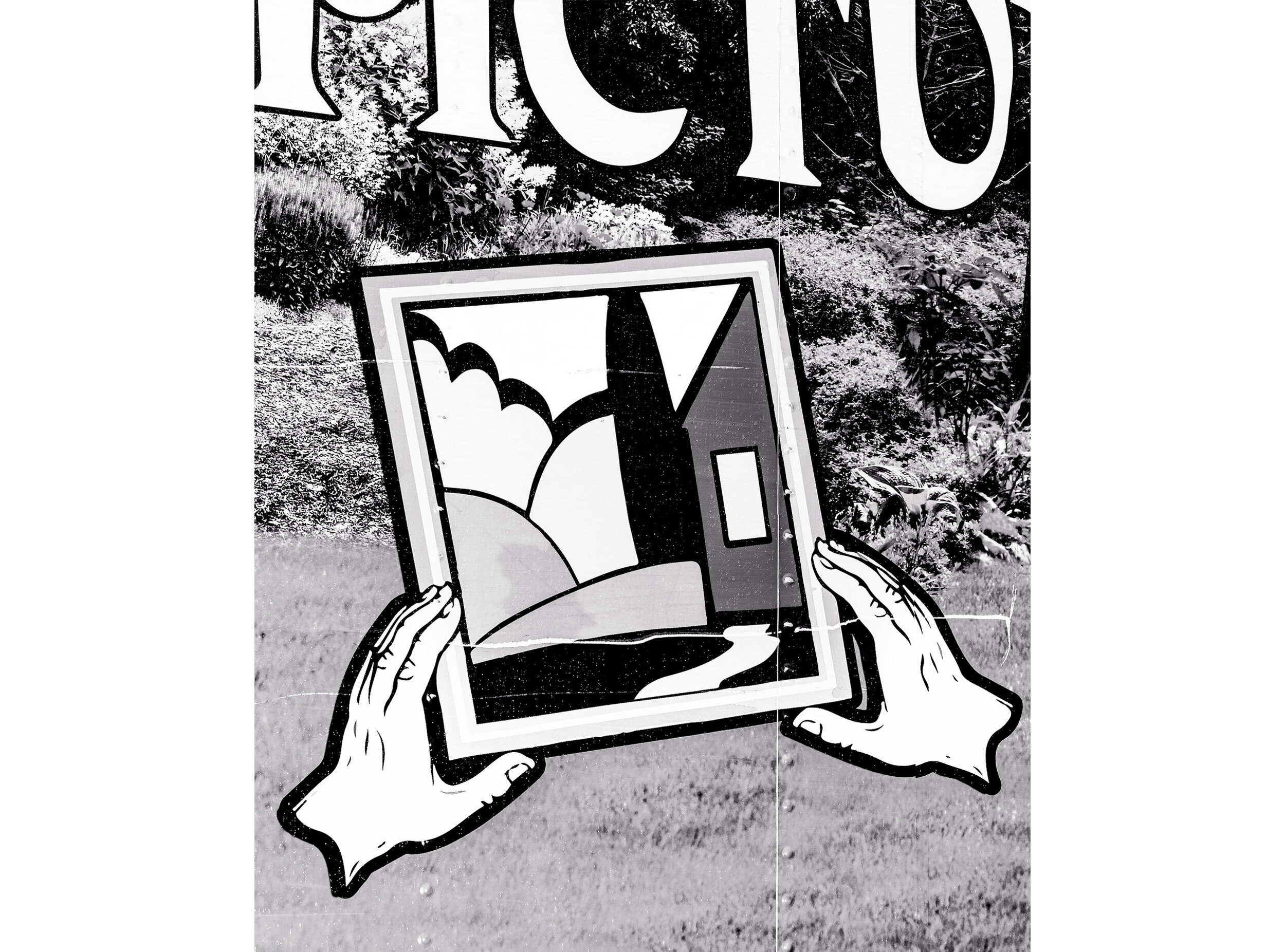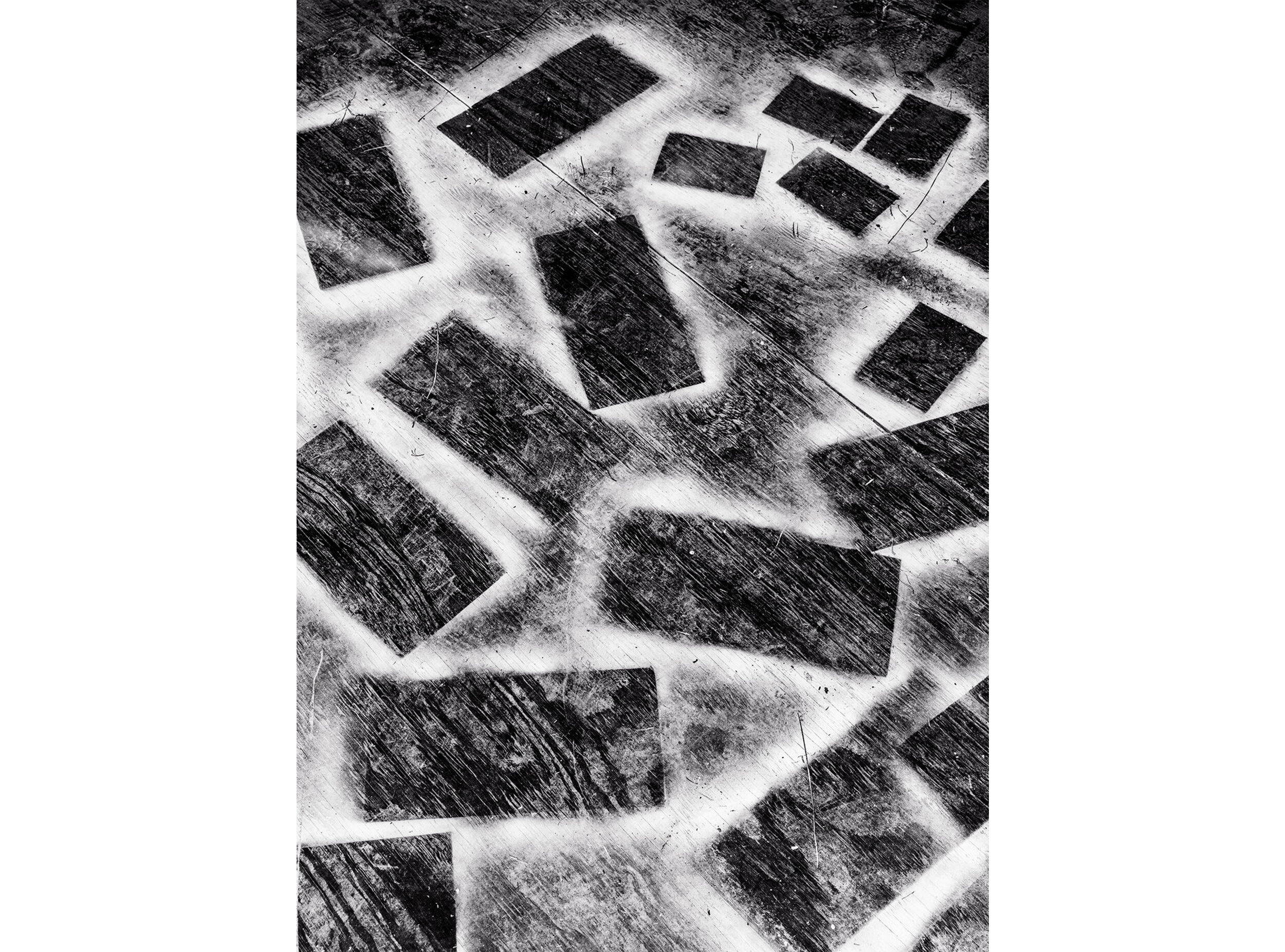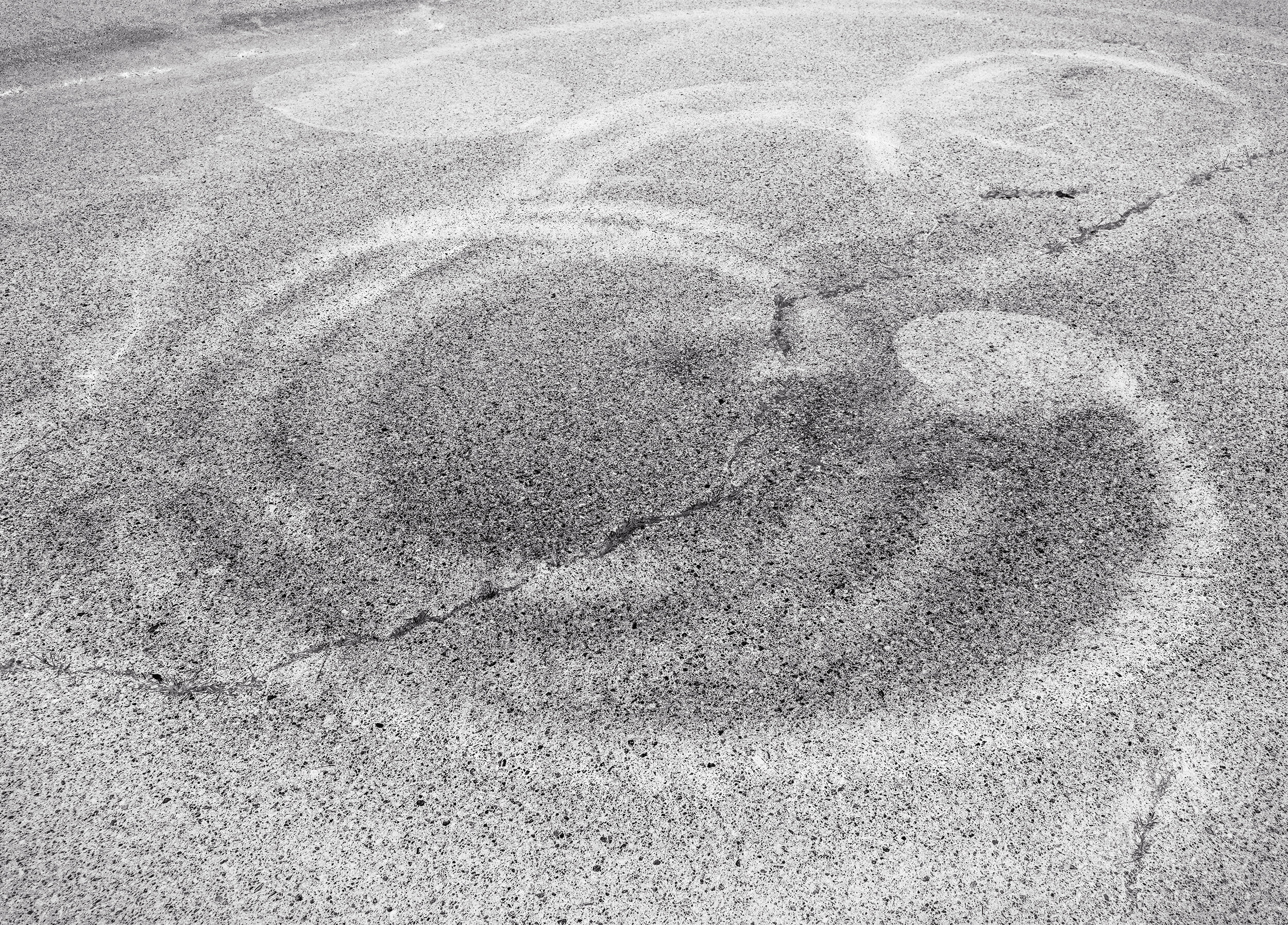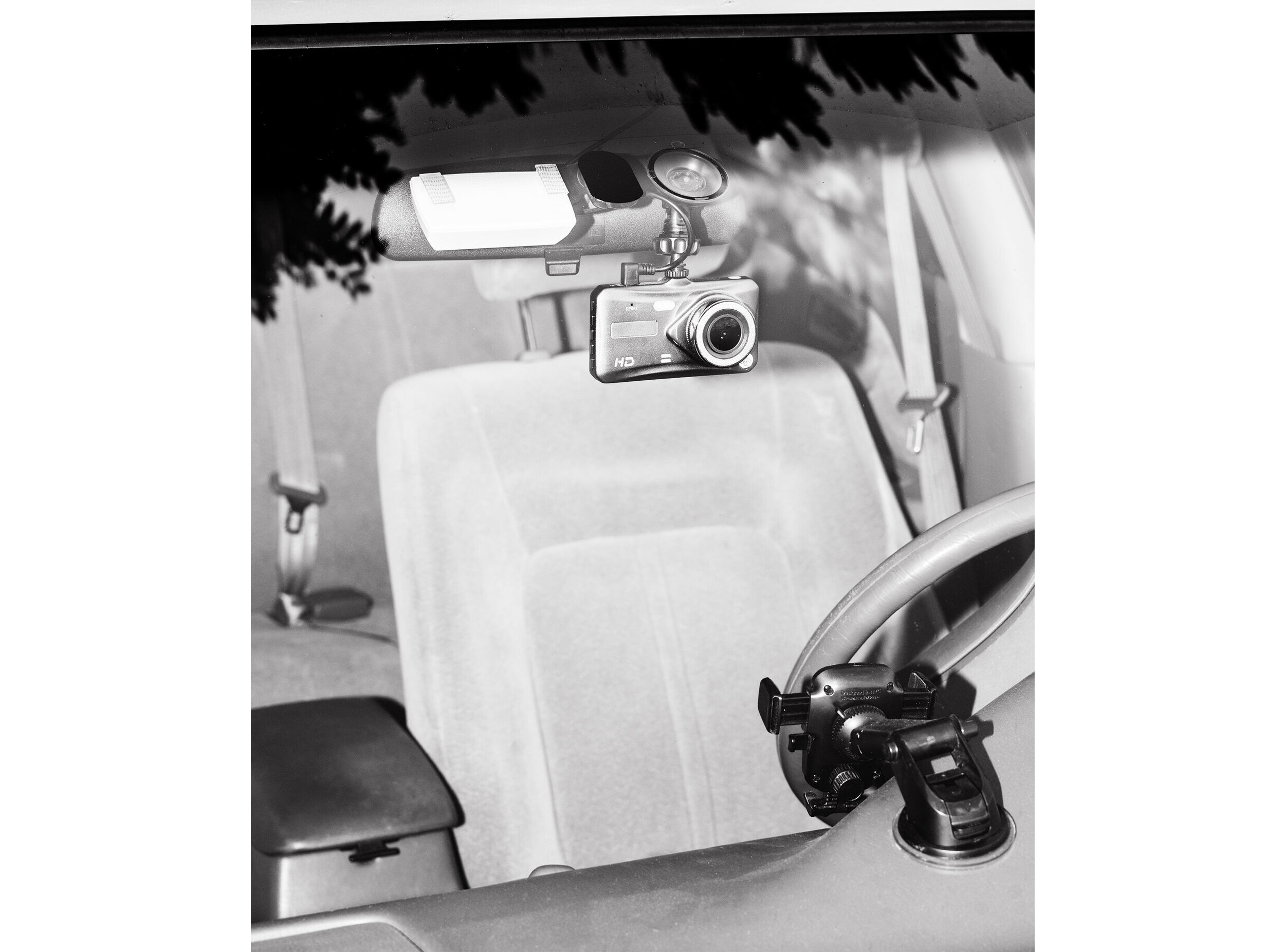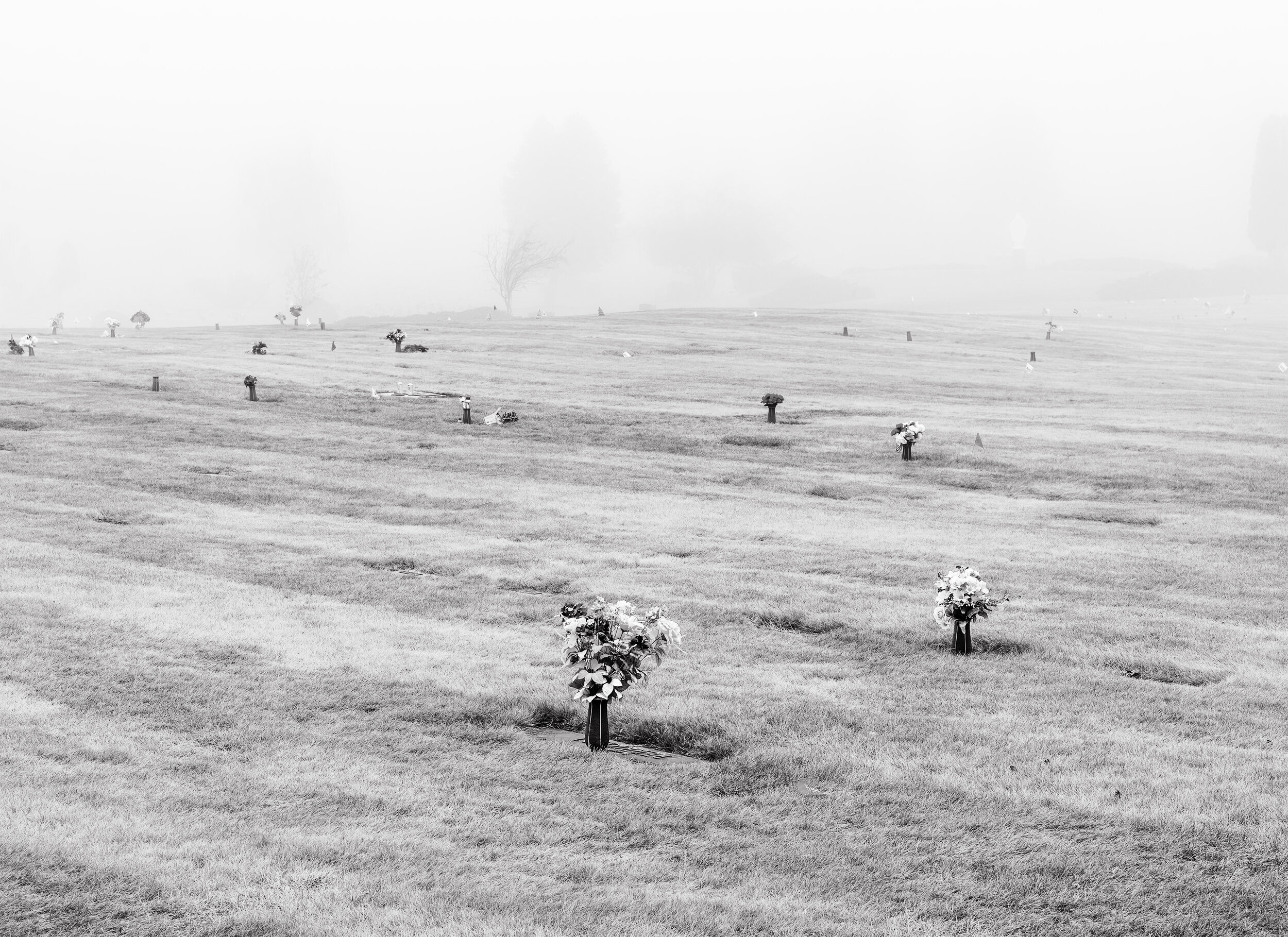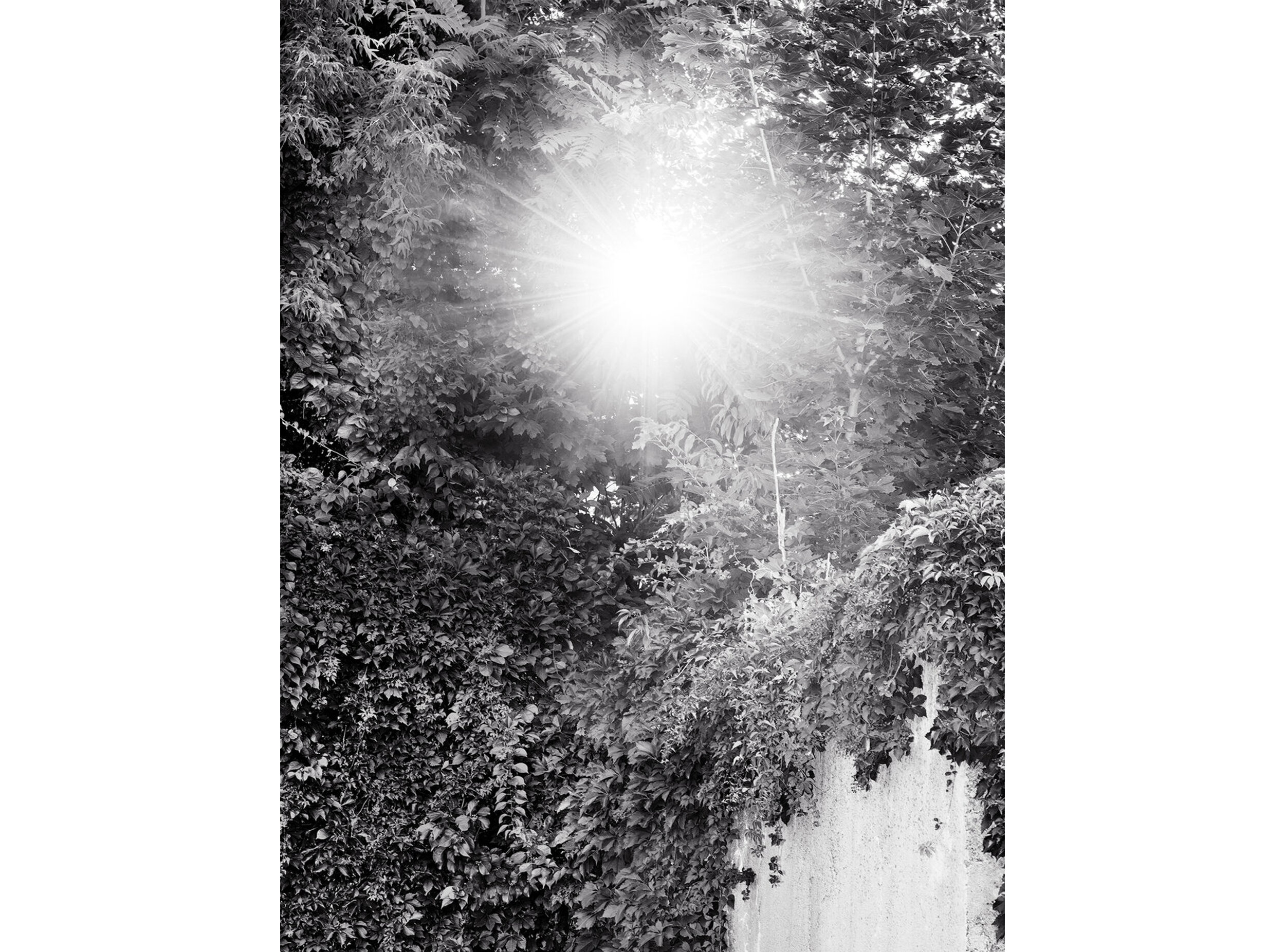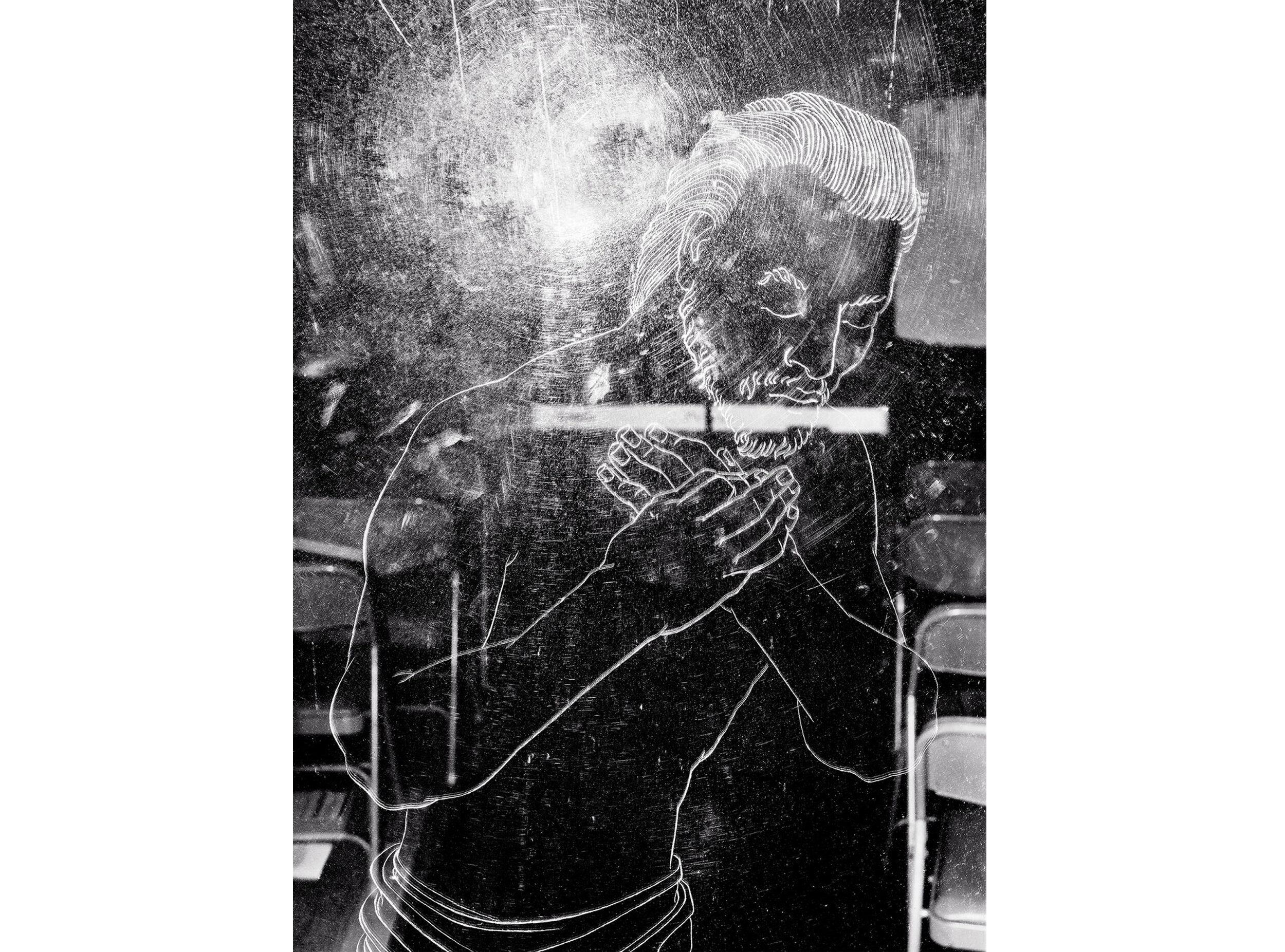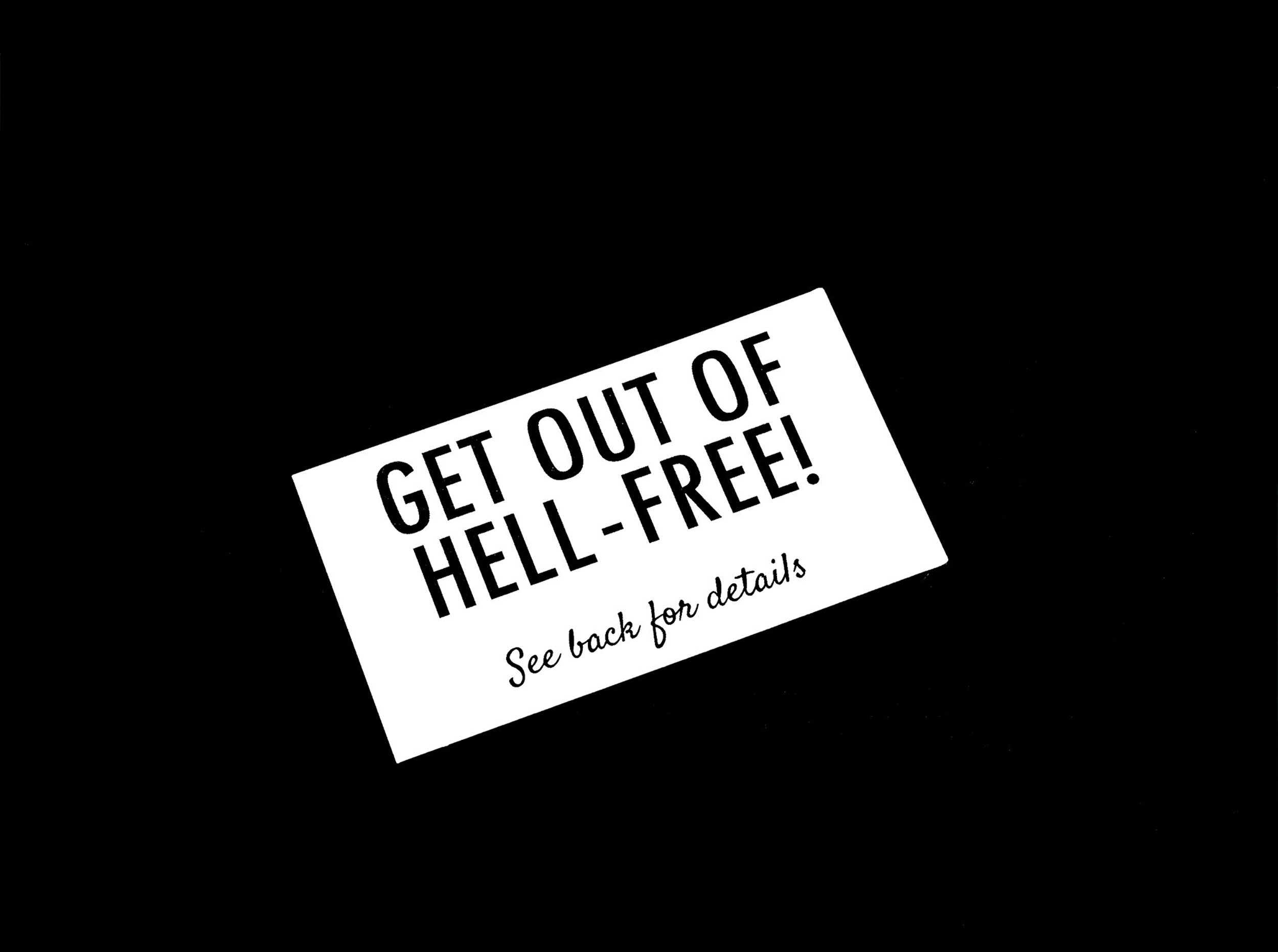Evan Perkins is a Boston-based artist. His photographs delve into acute explorations of the relationships between man-made structures and the altered natural world. He is highly influenced by the history of his upbringing along with matters of natural history, including botany, meteorology, and astronomy.
“The images in Grab Your Bibles, There’s a Storm Comin’, create a fictitious community, full of contradiction and paradox; used to invite a dissection of the white, evangelical, America that our systems of influence have continually granted an imbalance of power. It is an exploration of the ways in which groups conform to a prescribed set of moral beliefs and rituals in search for certainty in a world where the comforts of conviction seem forever out of reach”.
Interview by Tom Skinner
TS: This series is ongoing and has been created against the backdrop of Trump’s presidency. He is now the only president to have been impeached twice. Has your view of the project changed at all over the last few months?
EP: The issues that have come to the forefront of our societal consciousness through this presidency over the last four years have continually shifted the way I approach my work. If there was any benefit to his presidency, it was that the injustices that are too often glossed over have been brought to the forefront. It was the catalyst that America needed to take a deep look at not only at where we find ourselves now but also the generations of injustice that led to this point. For a majority of Americans, this restructuring of how we view our country’s history is deeply rooted in the privilege that not everyone bears the weight of injustice equally. While far too many have been aware of these issues for decades, I believe that there has been a wave of reflection that can hopefully set the tone for how we move forward as a country.
The images in Grab Your Bibles, There’s a Storm Comin’, create a fictitious community, full of contradiction and paradox; used to invite a dissection of the white, evangelical, America that our systems of influence have continually granted an imbalance of power. It is an exploration of the ways in which groups conform to a prescribed set of moral beliefs and rituals in search for certainty in a world where the comforts of conviction seem forever out of reach. One reason I’m drawn to continue making this work is that it’s able to constantly shift with the world that we’re living in. While the landscape created in the images isn’t held to a geographic specificity, it’s still inspired by the conflicts we have to wrestle with in America. I’m not interested in providing answers through the work but rather having it function as a way to continually ask questions that encourage a reconsideration of the biases and programming we’ve received as Americans, specifically through the context of white, evangelical America.
TS: Joe Biden tells Americans to not just keep the faith, but spread the faith. In relation to belief-based power dynamics, do you see the new presidency as being vastly different to the last?
EP: There’s a balance to the way we need to view this transition of power. On one hand, we’re able to rid ourselves of this parasitic entity that has continually and ruthlessly aimed to divide us with no regard for anyone’s wellbeing beyond his own. We also can’t become complacent and slowly shift into believing that all our problems as a nation are solved now that 45 is out of office. We should be skeptical of any leader or belief system that suggests that they are the only solution to their constituents’ problems.
That being said, the new tone set by the current administration is crucially important to the way in which we proceed as a country. They are by no means beyond criticism, but having new leadership that is proactively seeking to address the most important issues we face through the lens of providing relief for a country of people who are struggling is a step in the right direction. Now we have to keep them accountable to ensure that they not only fight for the promises they ran on but also encourage them to take bolder steps that reflect the ever deepening needs we have as a country.
TS: Photography lends itself well to examining memory and subconscious influence. Grab Your Bibles is based on a fictitious community, not dissimilar to the one you grew up in. What did you learn about yourself while making and editing the project?
EP: It took a while to put this together, but I slowly began to realize how intertwined our personal experiences are with seemingly disparate portions of our lives. For the last decade or so I had been reexamining the beliefs and programming that were handed down from the community I was raised, over time seeing that there was a dissonance between what I was told and what I had been experiencing in my own life and throughout the world adjacent to me. I saw this as something separate from my artistic practice and didn’t think it would be something I would incorporate into my work. But as I continued to photograph, I consistently found these themes resurfacing in the images I was making and the landscape I was drawn towards.
I was photographing scenes in flux that perpetually contradicted themselves. I was interested in the dissonance of facade and perception and the ways in which we often ignore the messiness of our own experiences while presenting a more polished version of ourselves to the world. This led to a further exploration of our cultural obsession with certainty and how both American and evangelical values deeply rely on maintaining the status quos they’ve erected. I began to include text and iconography I was familiar with growing up in an evangelical rural/suburban community in America and began to pair it with a frenetic and anxious energy that I was discovering and photographing in the landscapes, people, and animals that reveal themselves in these images.
TS: There are four images of animals in the series; two of birds, one of a dog and a rabbit. The images are full of unease, the animals appear to be trying to escape. What role do they play in the project?
EP: To not run the risk of being illustrative, I wanted to include images in the work that were heavily connected to ideas of myth and metaphor. I’m fascinated by the ways in which animals have an almost paranormal characteristic of being able to predict oncoming storms and other natural phenomena, and I used this energy to create a sense of tension in the work. For me, the title Grab Your Bibles, There’s a Storm Comin’, ties the various aspects of the work together, referencing the epic Biblical stories that I was raised with and the rich metaphors they contain. It focuses on how we crave certainty and turn to predetermined and comfort-based thinking in the face of confrontation as well as repurposing the ways where in the Bible, storms were used to metaphorically represent divine reckoning and cultural turning points.
TS: What are your hopes for America's future?
EP: I’m finding it hard to provide an answer that doesn’t seem contrived or cheesy as hell haha! But I’ll give it a try. American culture doesn’t often lend itself to subtlety and nuance. We’re drawn to tradition, excess, and certainty. I hope that we can become more willing to adopt non dual thinking, allowing space to consider upbringings and experiences different from our own as valid in order to empathetically live with those around us. If we were able to have more honest conversations and not allow those in power to reductively blame, scapegoat, and divide us, we give ourselves the opportunity to see the humanity in each other, and I believe that would dramatically change the way we function as a country.
www.evanperkins.com
@perklax

